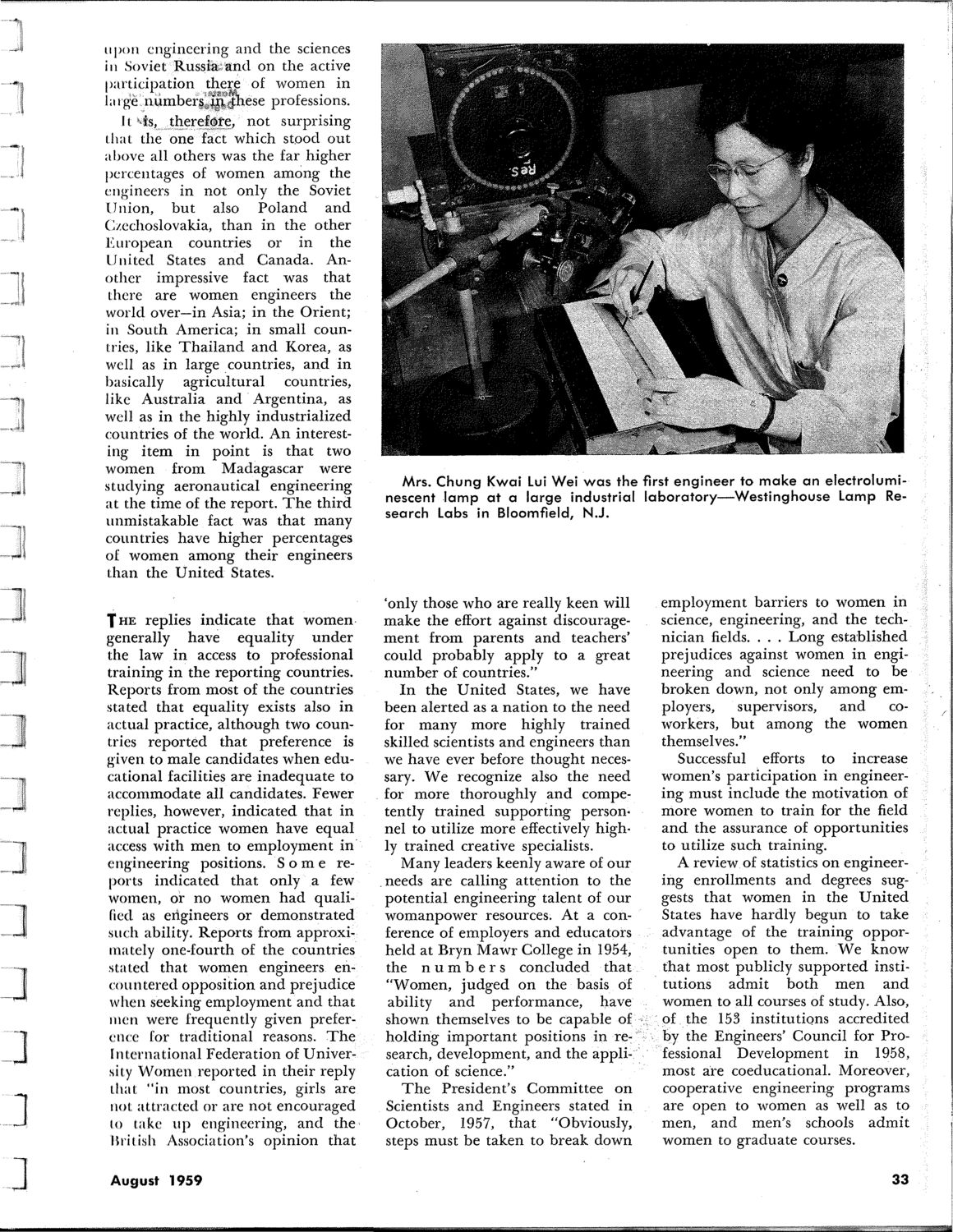| |
| |
Caption: SWE - News Clippings Book
This is a reduced-resolution page image for fast online browsing.

EXTRACTED TEXT FROM PAGE:
upon engine-cling and the sciences in Soviet Russia and on the active p.uiio'palion there ot women in l.i i ge numbers i n these professions. 11 is, therefore, not surprising I ha I the one fact which stood out above all others was the far higher percentages of women among the engineers in not only the Soviet Union, but also Poland and Czechoslovakia, than in the other European countries or in the United States and Canada. Another impressive fact was that there are women engineers the world over—in Asia; in the Orient; in South America; in small countries, like Thailand and Korea, as well as in large countries, and in basically agricultural countries, like Australia and Argentina, as well as in the highly industrialized countries of the world. An interesting item in point is that two women from Madagascar were studying aeronautical engineering at the time of the report. The third unmistakable fact was that many countries have higher percentages of women among their engineers than the United States. Mrs. Chung Kwai Lui Wei was the first engineer to make an electroluminescent lamp at a large industrial laboratory—Westinghouse Lamp Research Labs in Bloomfield, N.J. T H E replies indicate that women generally have equality under the law in access to professional training in the reporting countries. Reports from most of the countries stated that equality exists also in actual practice, although two countries reported that preference is given to male candidates when educational facilities are inadequate to accommodate all candidates. Fewer replies, however, indicated that in actual practice women have equal access with men to employment in engineering positions. S o m e reports indicated that only a few women, or no women had qualified as erigineers or demonstrated such ability. Reports from approximately one-fourth of the countries stated that women engineers encountered opposition and prejudice when seeking employment and that men were frequently given preference for traditional reasons. The International Federation of University Women reported in their reply that "in most countries, girls are not attracted or are not encouraged to take up engineering, and the British Association's opinion that August 1959 'only those who are really keen will make the effort against discouragement from parents and teachers' could probably apply to a great number of countries." In the United States, we have been alerted as a nation to the need for many more highly trained skilled scientists and engineers than we have ever before thought necessary. We recognize also the need for more thoroughly and competently trained supporting personnel to utilize more effectively highly trained creative specialists. Many leaders keenly aware of our needs are calling attention to the potential engineering talent of our womanpower resources. At a conference of employers and educators held at Bryn Mawr College in 1954, the n u m b e r s concluded that "Women, judged on the basis of ability and performance, have shown themselves to be capable of holding important positions in research, development, and the application of science." The President's Committee on Scientists and Engineers stated in October, 1957, that "Obviously, steps must be taken to break down employment barriers to women in science, engineering, and the technician fields. . . . Long established prejudices against women in engineering and science need to be broken down, not only among employers, supervisors, and coworkers, but among the women themselves." Successful efforts to increase women's participation in engineering must include the motivation of more women to train for the field and the assurance of opportunities to utilize such training. A review of statistics on engineering enrollments and degrees suggests that women in the United States have hardly begun to take advantage of the training opportunities open to them. We know that most publicly supported institutions admit both men and women to all courses of study. Also, of the 153 institutions accredited by the Engineers' Council for Professional Development in 1958, most are coeducational. Moreover, cooperative engineering programs are open to women as well as to men, and men's schools admit women to graduate courses. 33
| |